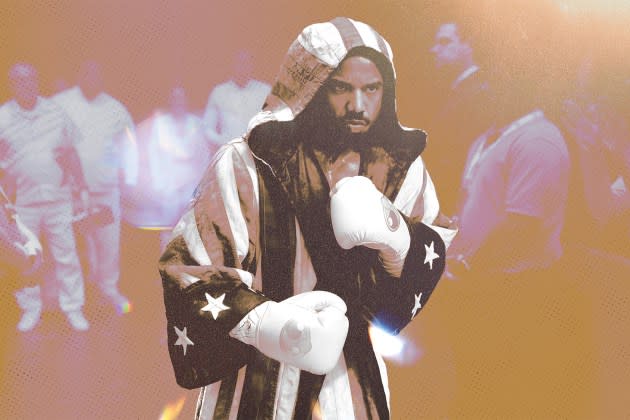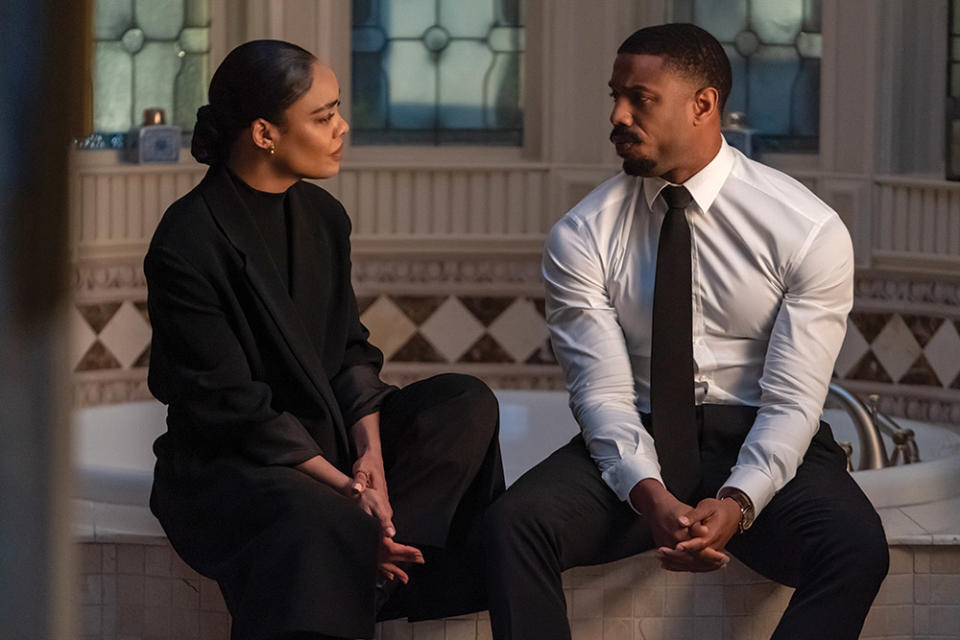‘Creed III’: When Michael B. Jordan Stepped Into the Directorial Ring (Guest Column)
- Oops!Something went wrong.Please try again later.
- Oops!Something went wrong.Please try again later.
- Oops!Something went wrong.Please try again later.

I joined Outlier Society as president and became Michael B. Jordan’s producing partner after serving as president of production at Paramount Pictures. When I arrived at Outlier, the Creed III team was already in development on the script from a story by the franchise’s originator, the incomparable Ryan Coogler, to be written by King Richard Oscar nominee Zach Baylin and Keenan Coogler, Ryan’s brother. While I was of course excited to support Michael in his directorial debut and produce this film alongside Michael and Ryan, another great joy for me was reuniting with producer Irwin Winkler, with whom I had worked over many years and films in my Paramount days and who won the Oscar for best picture with Rocky.
In the early stages of preproduction, we stress-tested the concept and paradigm of the movie. Michael and I constantly asked ourselves, “What kind of movie are we making?” Yes, we were making a Creed film. Yes, we were making a sequel. Yes, we were making a boxing movie. But the movie also had to be a thriller, and it had to deliver on Adonis Creed’s reckoning with his past. It all had to look and feel like everything we know and love about the Creed franchise, but it also had to feel like a new and different experience.
More from The Hollywood Reporter
We wrote down every film reference and movie that we felt connected to what we had in mind for Creed III. We watched and rewatched all our references, debated them and honed in on the tone and visual language of our story and Michael’s vision. As we started to build the crew and creative team around us, we always went back to that list of references. Michael never lost sight of what he was making. He knew exactly what he wanted, and through hours, days and weeks spent with his department heads, he articulated that vision.
We had two primary influences for the central story and one major influence for the action. The former was drawn from the great American noir thrillers — pretty much anything with Robert Mitchum: Out of the Past, Cape Fear and Night of the Hunter remained on the whiteboard throughout those conversations. The other category of primary influences was best-in-class family dramas, with Robert Redford’s best picture Ordinary People at the top of that list. What Redford did in that film (his directorial debut, by the way!) was show a family unable to discuss their trauma, struggling to communicate and move beyond their pain. We felt that was relevant to what Adonis and Bianca Creed (the spectacular Tessa Thompson) were experiencing.
Additionally, the care that went into the unique nature of every frame of every fight truly elevated the moviegoing experience. The visual language of the boxing sequences was heavily influenced by Michael’s love of anime.
To make a movie for a theatrical audience, we knew we needed to create a way for this film to be experienced only on a large screen. We met with our friends at Imax and asked them if they’d be interested in making a sports movie. The good news is — they said yes! We had the privilege of shooting the first prestige sports film ever filmed for the Imax format. The moment we made this choice, Michael and the department heads were able to design the boxing stadiums and the matches with the largest canvas possible.

So, what was I worried about on a daily basis? Easy answer: time. I know every producer worries about time, but the fact that Michael was pulling triple duty — directing, producing and acting — made time management especially important. Having worked on many large-scale action franchises over the years with multihyphenates (Editor’s note: At Paramount Pictures, Raposo oversaw several Mission: Impossible films, Top Gun Maverick and the J.J. Abrams-produced Star Trek films), I knew we had to create space and time for Michael to prepare in all areas for the shoot day as a performer, but he also needed to be present with his actors and his department heads. Oh, and then there was the small matter of Michael having to remain in heavyweight champ size while also training with the other fighters in the film.
I am proud of the work we did, but to this day I am not quite sure how Michael fit it all in. I think he found a way to stop time and have it expand.
Michael also had a vision that was both large-scale when the movie called for it and intimate and touching when the movie needed it. And there were moments when I knew my job was to also get out of the way and just watch.
There is a scene that takes place in the Delphi Gym at night with Adonis and his daughter, Amara (Mila Davis-Kent), in which Adonis teaches Amara how to punch the heavy bag. Michael and Mila did a take in which she blows her bangs out of her eyes so she can see the bag and throw a perfect punch. When I watched at the monitor, I thought that Mila was frustrated with her hair and wanted it out of her eyes. It was so charming and so real. When we cut and the crew was making adjustments, I mentioned to Michael that the hair movement was so cute. Michael told me the image came to him while preparing for that day’s shoot, and so it was a direction he gave her. For me, this moment makes the scene — and it reminded me that in movies, it’s always the little details that inspire.
Making Creed III was fun, hard and inspiring. When we were shooting the fights, I would often perch under the boxing ring between takes so I could speak to Michael immediately upon the AD yelling “cut” (not wanting to waste any of his time while I ran back and forth from video village). I remember thinking then, as I do now, that even though I was crouched under a boxing ring with the mat on my head, I can’t imagine doing any other job in the world.
This story first appeared in a December standalone issue of The Hollywood Reporter magazine. Click here to subscribe.
Best of The Hollywood Reporter

